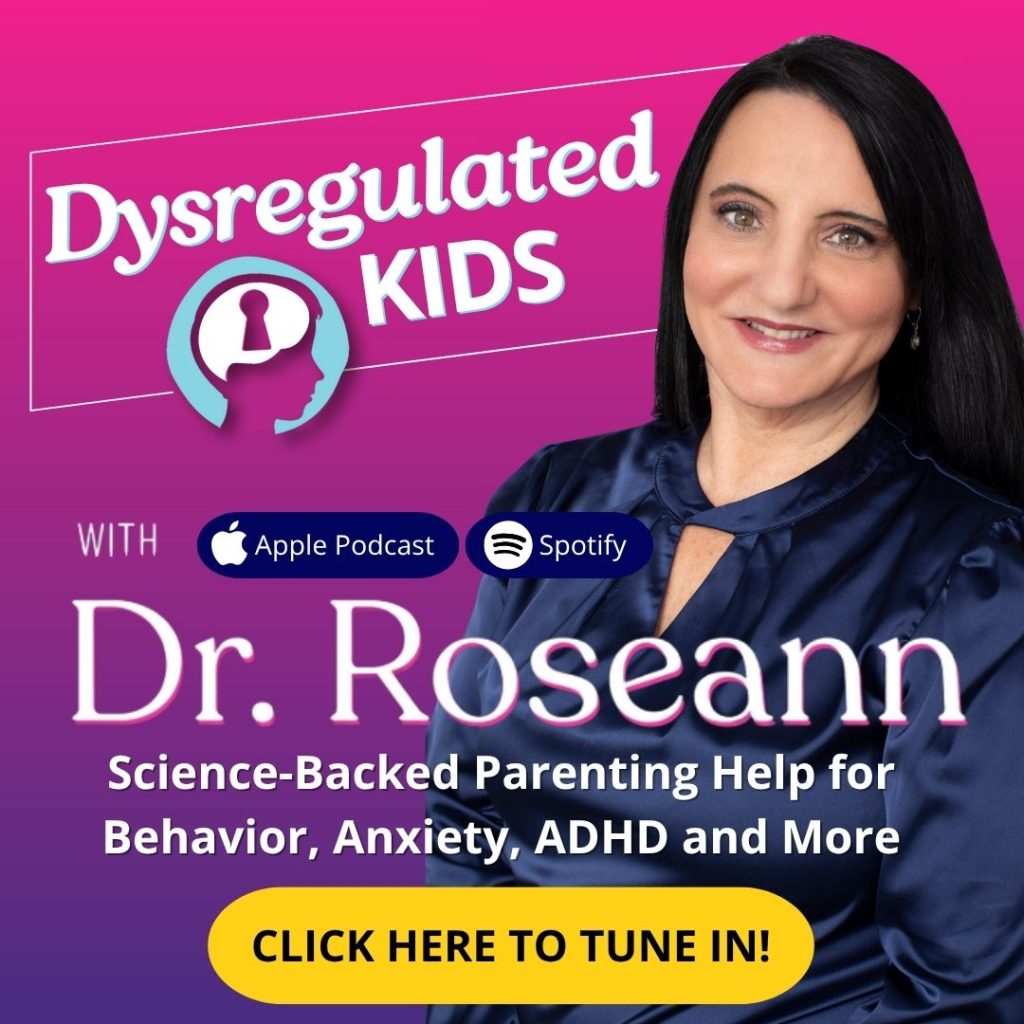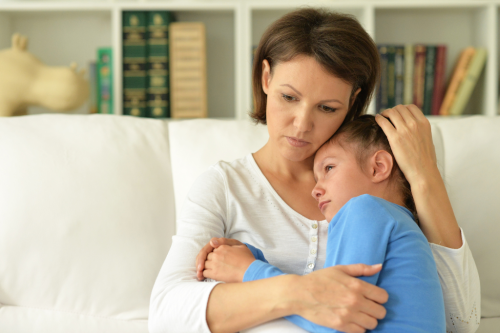Estimated reading time: 7 minutes
If your child’s behavior feels all too familiar, you’re not alone.
Family patterns often repeat themselves until we learn to regulate, not react. When we calm the brain first, we stop passing on stress—and start building calm that lasts.
What Are Family Patterns and Why Do They Matter?
Family patterns run deep—like invisible scripts that shape how we love, react, and cope. We don’t always see them, yet they influence everything from bedtime battles to how we handle a slammed door.
Some patterns bring comfort and connection, while others keep us stuck in cycles of tension or shame.
- Yelling or harsh reactions
- Avoidance or emotional distance
- Needing control or perfection
These habits aren’t character flaws—they’re signs of a dysregulated nervous system stuck in fight, flight, or freeze. The good news? We can rewrite the script.
With Regulation First Parenting™, we learn to calm our own nervous system before we connect or correct—creating new, healthier family patterns where calm and connection come first.
What Causes Dysfunctional Family Patterns to Repeat?

Patterns repeat because the nervous system remembers long after the mind forgets. It’s like muscle memory for emotions—our body reacts before logic even has a chance to step in.
Even when we want to do things differently, stress can pull us right back into old family responses—yelling, shutting down, or trying to control what feels out of control.
Common reasons these patterns repeat:
- Chronic stress that stays stored in the body
- Unregulated emotions modeled by caregivers
- Learned beliefs like “kids should just behave” or “I’m not good enough”
- Not having the tools to self-regulate when pressure hits
Parent Story:
Sarah, a mom of two, promised she’d never yell like her dad did—but by bedtime, the shouting slipped out anyway. Once she learned to pause and breathe before responding, she realized the yelling wasn’t defiance; it was her nervous system trying to protect her. Regulation gave her a choice.
The truth is, we can’t break what we don’t regulate. But once we calm the brain first, real change begins—and it’s never too late to start.
How Family Patterns Affect Children’s Behavior
Kids learn regulation through co-regulation.
When your child feels your steady energy, their nervous system mirrors that peace. But the moment they sense anger or tension, their brain flips into defense mode—fight, flight, or freeze. Research shows a child’s nervous system literally syncs with their caregiver’s heartbeat and rhythm (Feldman, 2015).
You might notice:
- Frequent meltdowns or outbursts
- Withdrawal or perfectionism
- People-pleasing or fear of mistakes
- Difficulty trusting adults
Children don’t copy what we say. They copy what our nervous system feels.
Real-Life Story:
I once worked with a mom named Sarah and her 9-year-old son, Leo. Every slammed door felt like a thunderstorm. At first, she thought he was defiant. Then she realized—he was replaying her own stress.
She started pausing for five deep breaths before speaking. Slowly, his outbursts melted away. When she steadied her breath, his brain learned safety again.
Your calm becomes their compass. When your body says, “You’re safe here,” their brain starts believing it. That’s when healing begins.
Remember—behavior is communication, and dysregulation is just a clue. Calm the brain first, everything follows.
How Can Parents Identify Their Own Family Patterns?
Awareness cracks open every old pattern. It’s the flashlight in a dark hallway—you can’t change what you can’t see.
Ask yourself:
- How did my parents handle stress or conflict?
- What emotion hits first when my child acts out—anger, fear, or shame?
- Do I reach for control, pull away, or try to keep the peace?
- Which of my child’s behaviors makes my chest tighten?
For one week, jot quick notes when tension rises. Notice what sparked it—your fatigue, their tone, or both. Soon, patterns will start to appear clearly.
Remember:
You’re not failing; you’re noticing. And that noticing is the first step toward healing.
Because behavior is the symptom—brain regulation is the solution. Calm the brain first, and everything follows.
How To Break Dysfunctional Family Patterns Without Feeling Guilty

Notice your reactions without judgment. That brief pause between feeling and responding creates space for calm and growth.
- Examine Your Parenting Style
If your parenting doesn’t feel authentic, that discomfort isn’t failure—it’s an invitation to heal and realign.
- Identify Patterns
Track what repeats—your tone, your triggers, and your child’s responses. Some patterns build connection; others block it. Keep what brings you closer, release what doesn’t.
- Challenge Limiting Beliefs
Catch one harsh thought and replace it with truth: I’m learning. I’m growing. I can do this differently.
- Practice New Behaviors
Pause before correcting, breathe before speaking, move before reacting. Each small shift builds new pathways toward calm and connection.
- Strengthen Coping Skills
Stress isn’t just what happens—it’s how your brain interprets it. Create your own calming toolkit with:
- Deep breathing
- Walking or stretching
- Journaling
- Prayer or reflection
- Recognize Triggers
Kids often reflect our old wounds. When their behavior stirs something in you, that’s your cue to regulate—not to blame yourself. Therapy or coaching can help you navigate those moments with support.
- Family or Parent Coaching
A compassionate coach helps families communicate, regulate, and rebuild more peacefully. You don’t have to do this alone.
Why Regulation Matters
When we’re dysregulated, safety disappears and arguments spiral. Calm restores clarity.
Research by Morris and colleagues (2017) shows that parents who regulate first raise more emotionally secure, confident children. Healing always begins with calm—because when the brain feels safe, everything naturally follows.
What Role Does the Nervous System Play in Family Patterns?
We’ve all had those moments when our emotions take over. When we’re dysregulated, we don’t think—we react.
That’s because the survival brain—the amygdala—jumps in before the thinking brain (the prefrontal cortex) can even catch up. It’s like flooring the gas pedal when the brakes are out—you move fast, but not always in the right direction.
In families, this often shows up as:
- Escalating power struggles
- Emotional shutdowns
- Overreactions to small behaviors
- Repeating the same arguments
- Disconnection and resentment that quietly build over time
Here’s the truth few parents hear: No learning or healing can happen in a dysregulated brain. You can talk, reason, or discipline all day long—but until the brain feels safe, change won’t stick.
Calm comes first; connection follows. That’s where healing begins.
So how do you bring calm back? Start small:
- Slow, intentional breathing
- Mindfulness or grounding exercises
- Physical movement or sensory play
- Neurofeedback to retrain brain patterns
When you regulate your own nervous system, your child’s brain learns from yours—mirror to mirror, breath to breath. That’s not magic. It’s science with heart—and it’s the beginning of real change.
Read about: How To Be A Calm Parent
How Healing Family Patterns Improve Relationships
When we regulate, connection deepens.
Instead of reacting to each other’s triggers, families start to understand the why beneath the behavior.
Parents often notice:
- Fewer meltdowns and quicker recovery
- Better communication between partners
- More emotional safety for kids
- Extra laughter and playfulness at home
Real-Life Story:
After years of tension, Monica and her teenage daughter began a nightly “two-minute reset”—no screens, just quiet breathing together. Within weeks, arguments turned into real conversations. Regulation didn’t erase their differences; it built a bridge.
Takeaway: Regulation doesn’t erase conflict—it transforms how we move through it. When the brain feels safe, connection naturally follows.
What If My Partner or Family Isn’t On Board?
You can start with you. One regulated person can shift the energy of an entire household.
Practical ways to lead change:
- Model calm instead of demanding it.
- Set gentle boundaries around your own triggers.
- Invite, don’t force, others to join (“This helps me feel calmer—want to try?”).
- Celebrate small shifts rather than perfection.
Remember: Your calm is contagious.
How To Pass On Healthier Family Patterns
Breaking a cycle means creating a new rhythm. Calm doesn’t just happen—it’s taught, modeled, and lived out in those tiny, messy moments that feel impossible.
Show your child what regulation looks like in real life:
Name your feelings | “I’m frustrated, so I’m taking a breath.” |
Keep simple routines | morning stretch and an evening check-in |
Support the brain | rest, nutrition, and movement |
Practice repair | “I yelled earlier. Let’s try again.” |
Each calm moment reshapes more than behavior—it rewires both your nervous systems. You’re not just ending old patterns; you’re creating a new legacy of safety and connection.
Calm the brain first, and everything follows.
Parent Action Steps
FAQs
What are signs I’m repeating my parents’ patterns?
If you find yourself reacting in ways that feel familiar—raising your voice, withdrawing, or feeling powerless—you’re likely replaying learned responses under stress.
Can family patterns be broken without therapy?
Yes. Self-awareness, regulation tools, and consistent practice can shift patterns. However, therapy or coaching can accelerate healing.
How long does it take to change family patterns?
With consistent regulation and reflection, parents often notice changes in weeks. Full rewiring takes time—patience is part of the process.
What if my child resists my new calm approach?
Stay consistent. Their brain may not trust the calm yet because it’s new. Repetition and safety rebuild that trust.
Is it ever too late to change?
Never. The brain’s neuroplasticity means we can always form new patterns. Every moment of calm is a chance to rewrite your family story.
Citations
Feldman R. (2015). Mutual influences between child emotion regulation and parent-child reciprocity support development across the first 10 years of life: Implications for developmental psychopathology. Development and psychopathology, 27(4 Pt 1), 1007–1023. https://doi.org/10.1017/S0954579415000656
Morris, A. S., Criss, M. M., Silk, J. S., & Houltberg, B. J. (2017). The impact of parenting on emotion regulation during childhood and adolescence. Child Development Perspectives, 11(4), 233–238. https://doi.org/10.1111/cdep.12238
Dr. Roseann is a mental health expert in Neurodivergence who is frequently in the media:
- Business Insider How to practice ‘autonomy-supported parenting’ to boost your family’s wellbeing
- Exhausted to Extraordinary Parent (Video) How to Build a Resiliency Mindset In Your Child – In Just 7 Minutes
- Love Shack Live How To Navigate The Parenting Journey As A Couple
Always remember… “Calm Brain, Happy Family™”
Disclaimer: This article is not intended to give health advice and it is recommended to consult with a physician before beginning any new wellness regime. *The effectiveness of diagnosis and treatment vary by patient and condition. Dr. Roseann Capanna-Hodge, LLC does not guarantee certain results.
Are you looking for SOLUTIONS for your struggling child or teen?
Dr. Roseann and her team are all about science-backed solutions, so you are in the right place!
Are you wondering if your child has a learning disability? Take test!










